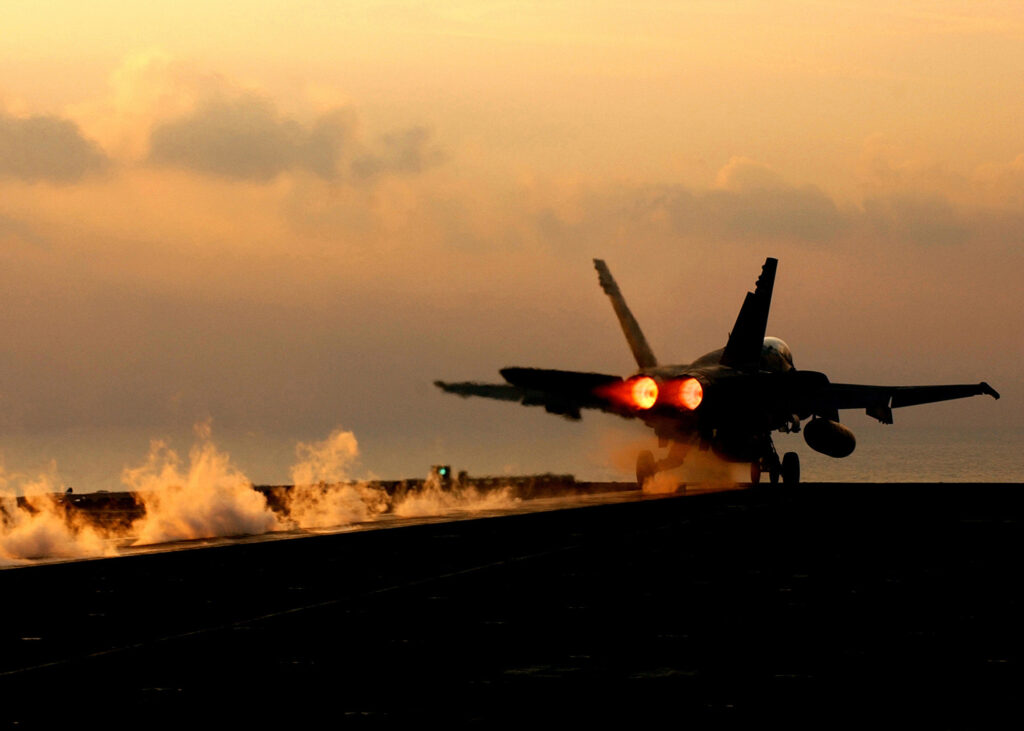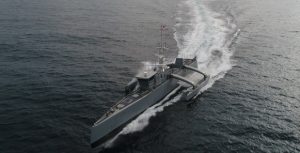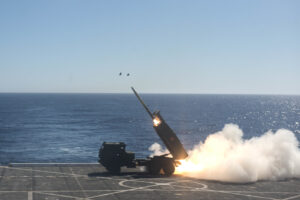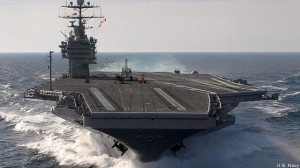WASHINGTON: Acting Defense Secretary Patrick Shanahan made the hard call to retire the USS Truman decades early — cutting the Navy’s carrier fleet by nine percent — to free up funding for new weapons more likely to survive a war with China, a senior defense official told Breaking Defense.
[Click here for all our 2020 budget coverage]

Patrick Shanahan arrives at the Pentagon early on Tuesday, Jan. 2, for his first day as acting Secretary of Defense.
Shanahan took office telling staff his focus is “China, China, China.” Beijing’s growing arsenal of precision-guided missiles seems increasingly able to find and cripple a thousand-foot-long flattop — unless the US carrier stays out of China’s range, in which case the fighter aircraft it carries can’t reach their targets. (Fighters can be refueled in mid-air, but the tanker aircraft required are big, slow, and vulnerable, so they can’t get close to China, either).
The goal isn’t to get rid of carriers, the defense official emphasized. In the vast majority of missions, from disaster relief to counter-terrorism to outright war, a massive mobile air base is extremely useful. The problem is a small but strategically critical set of missions that require engaging China’s massive land-based missile force. In those missions, the official argued, we can’t count on carriers alone and need to add new options to penetrate hundreds of miles of high-tech layered defenses.
Carrier advocates argue that even big ships are hard to find in the vast Pacific, that both existing missile defenses like Aegis and new ones like lasers can shoot down incoming Chinese missiles, and that, even if hit, a 100,000-ton carrier can keep fighting. True or not, what matters for deterrence is not what carriers can really do, but what the Chinese believe — and one serving Chinese admiral has publicly boasted that Beijing could win any future war simply by sinking two US carriers.
So the Pentagon wants to make Chinese planning much more complicated, hopefully deterring war, by investing in a much wider range of weapons.
Alongside a still-unmatched fleet of 10 supercarriers (down from 11), the Navy would deploy large numbers of smaller, robotic vessels, both small surface ships and mini-submarines. These unmanned vessels would be both harder for the Chinese to hit and, just as important, less painful for the US to lose. Navy officials have already said they want a mix of robotic scout ships — which can act as decoys to draw Chinese fire — and unmanned missile boats to strike what the scouts find. A 132-foot prototype, the Sea Hunter, is already in service conducting experiments.
The entire military — not just the Navy — would invest in a US arsenal of long-range, precision-guided, non-nuclear missiles to counter China’s. Many of these weapons would be land-based types prohibited by the 1987 INF Treaty, from which the Trump Administration is withdrawing. The new missiles could be fired from the new robotic craft, traditional ships and submarines, aircraft, or even truck-mounted HIMARS launchers operated by the Army and Marines. The US could field all of these options with current technology, for example by adapting Navy Tomahawk cruise missiles and Air Force JASSMs to new launch platforms, but it’s also investing heavily in a new breed of much faster hypersonic missiles intended to zip through Chinese defenses.
How to pay for all this? Not refueling the nuclear reactor core of the USS Truman would save the roughly $6.5 billion it would have cost to overhaul, plus $1 billion a year in operating costs thereafter, at the price of retiring the carrier about 25 years early. Ironically, speeding the production of new carriers with a recently signed two-ship contract saves another $4 billion that can be invested in alternatives to flattops.
The 2020-2024 budget plan due out today would also cut two LPD-class amphibious warships used to land Marines — which have to come even closer to hostile shores than carriers do — and adds a nuclear-powered attack submarine, considered to be the Navy’s most survivable manned vessel.
The budget plan has already inspired fierce battles inside the Pentagon. Shanahan won. Now comes the really hard part: convincing Congress to give up a known quantity that supports thousands of well-paying blue collar jobs and invest in new weapons which don’t yet have a constituency.
[Click here for all our 2020 budget coverage]
In a ‘world first,’ DARPA project demonstrates AI dogfighting in real jet
“The potential for machine learning in aviation, whether military or civil, is enormous,” said Air Force Col. James Valpiani. “And these fundamental questions of how do we do it, how do we do it safely, how do we train them, are the questions that we are trying to get after.”































